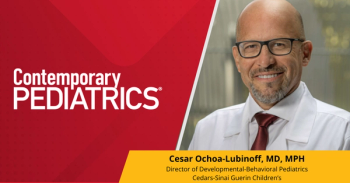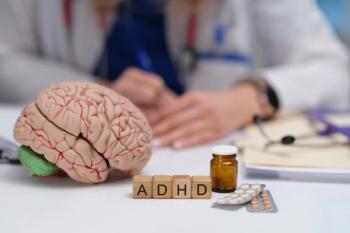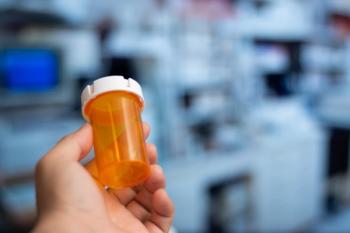
Drug Holidays and Challenges in Treatment Adherence in Pediatric ADHD
Robert L. Findling, MD, MBA, and Timothy Wilens, MD, consider the dosing and adherence challenges that arise in pediatric ADHD, as well as the potential benefits and damages of patients taking a break from treatment.
Episodes in this series

Robert L. Findling, MD, MBA: Let’s say you’ve got somebody, and because they’re under your expert care, they’re doing great. The holiday season is coming up. This comes up now and again: tell me about drug holidays. Do you ever give people substantial breaks from treatment? If you do, what’s your approach? If not, why not?
Timothy Wilens, MD: That’s an interesting point. At the American Academy of Child and Adolescent Psychiatry meetings, we discussed this again. I love the title: drug holiday. Everybody wants to take a drug holiday. There’s something very compelling about the name. Who are candidates for medicine holidays or drug holidays? First, people who are struggling. If your kids are having height and weight issues, holidays can help kids catch up on weight and height. We all have a small subset of patients who struggle. Those patients absolutely need it. In those cases, sometimes you take away the drug or you reduce the dose. With other people, I see this more with girls who have inattentive ADHD [attention-deficit/hyperactivity disorder], whose difficulties are more in the classroom and almost constricted to that. Socially, they’re good and able to navigate things. They aren’t driving or doing things that are high risk without stimulants. They don’t want to be on them on the weekends and holidays, and that’s fine.
The other thing to consider is children who have more of a standard ADHD. On holidays or weekends or over the summers, if you take away the medicine, then they’re at risk of having accidents if they’re riding bikes or starting to drive. They get into it with their parents and peers. In those cases, sometimes I cut the dose down by a third or half; they’re on a smaller dose, which has dose response. It helps—not as optimally, but they don’t need as much optimal treatment because they aren’t in class. They don’t have the heavy cognitive load. They feel good. They’re usually eating better, sleeping better, and feeling a bit better. There isn’t a one-size-fits-all approach, but these are some strategies I’ve learned from listening to my patients and going back and forth.
Robert L. Findling, MD, MBA: As with anything else, we’re also talking about customizing what we do for each patient based on their needs, their demands, and the profundity of their impairment and illness. Because we’re talking a little about challenges, tell me what you consider some of the challenges that you’ve come across with giving people medicine treatment for ADHD. I have a couple of my own that I have to pay attention to, but I’m curious about the things that pop up most in your practice.
Timothy Wilens, MD: Of the challenges that I’ve had, adherence is first. I worry a lot about adherence. All the data show that’s a real issue. You’ve got to have an alliance. You have to work with people. When I’m treating, does it work? Am I getting the efficacy that I’m looking for in these specific areas that are identified? No. 2: how manageable are the adverse effects? Essentially, all treatments we use are going to have adverse effects, so it isn’t, “I hope you don’t have adverse effects.” You’re going to have adverse effects. How do we help the child and the family manage the adverse effects? Most of the adverse effects can be managed. That’s another challenge.
Third is ensuring that I’m seeing longer-term patients frequently enough. When they’re doing well, they disappear. Even if we renew medicines, I’m seeing them often enough that they call and we renew. I find that they come back, and they’ve been faltering because there haven’t been dose adjustments or there’s a new comorbidity. Have adequate follow-up to ensure that people feel comfortable if things aren’t going well with either their ADHD or all that co-occurring stuff we talked about earlier.
Robert L. Findling, MD, MBA: It’s interesting because for me, it’s about understanding the time course’s effectiveness across the day, and that isn’t always something that I think of. Back in the day, when you gave a dose of medicine and it lasted 4 hours and you waited another 4 hours, it was part of the routine care of these patients. But with these agents that last so long, if you aren’t careful, you could run out and think, “Maybe I’m not doing right with the right medicine,” or “Maybe I need to change the dose somewhere,” or it might be that all the child’s difficulties are at a certain point of time, and you’ve got to think of new strategies. For me, if I’m not careful to think about the time course of effectiveness across the day, I run the risk of jumping to conclusions. That’s because, to some extent, we’re lulled into confidence because some of these agents last much longer and oftentimes are so much more effective than the every-4-hour doses that some of us grew up on.
Timothy Wilens, MD: That’s a major consideration, especially as children get older, play sports, have to do their homework later, and things like that. How long they last and how they do during the wear off is important. I absolutely agree.
Transcript edited for clarity
Newsletter
Access practical, evidence-based guidance to support better care for our youngest patients. Join our email list for the latest clinical updates.

















